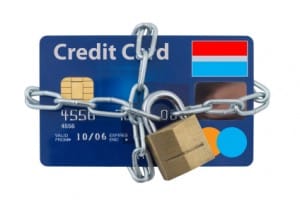The Broken American Credit Card System
Discover the key differences between European and American credit card systems, including security features, transaction methods, and compatibility for international travel.

As everyone by now has heard about the Target Credit Card hacking scandal which netted the thieves upwards of 100 Million Credit Card numbers. My friends and I have discussed the broken and outdated American Credit Card System. How can the American Credit Card system be so far behind the rest of the world we always ask? We also know a handful of people each that have had their Credit Card information stolen one way or another.
It is hard to imagine such a data breach the magnitude of Target but I recently read a book about the Credit Card underworld which highlighted all the ways these thieves work the system. The book Kingpin: How One Hacker Took Over the Billion-Dollar Cybercrime Underground is actually a very good read and actually reads more like an adventure than an Non-Fiction book. It is scary at the same time at how easy it is to access Credit Card information and systems. The book is a perfect example of one particular crook took it to the next level.
My wife and I were victims of Credit Card fraud only last year when we visited Florida. Somewhere along the way our Credit Card was copied and sold along to thieves in New York. My wife and I returned to the US for Christmas and New Years and I payed very close attention to the Credit Card process for each transaction we made from stores to restaurants. What was shocking to me was the latent lack of consistency across all the different Point of Sale locations. Below is a list of the different credit card processes we encountered:
Stores
Scenario 1 - Swipe Card, the cashier prints a receipt, and asks us to sign the receipt
Scenario 2 - Swipe Card, cashier asks for ID, processes the transaction, and either sign on a electronic pad or the receipt
Scenario 3 - Cashier takes card and Swipes it and you sign nothing and just get a receipt
Restaurants
- Give the server your credit card and they then run into the back room for what seems like an eternity before coming back with your card and the completed transaction receipts
- Swipe your credit card and input your zip code (The most secure out of all transactions listed)
How to fix the Broken Credit Card System
- Start incorporating Smart Cards into Credit Cards. Europe has been using Smart Cards for a very long time. Smart Cards added an additional layer to Credit Cards that only open up access to the chip on the card once the pin has been entered. The pin is always separate from the card and can actually be a dynamically generated number as well.
- Require Credit Cards to have pins numbers for each transaction
- Require remote Credit Card processing machines. This would allow you to view your credit card at all times. For example, a restaurant server must bring the device to your table to process your payment.
- Two-Factor authentication - This is where I believe will make the largest impact on Credit Cards. What if every Credit Card transaction sent you a SMS/Text Message/Automated Phone call with the transactions details and a 6 digit code which you must type in the Credit Card terminal to complete the transaction.
FAQ Section: Difference Between European and American Credit Card Systems
What are the main differences between European and American credit card systems?
European credit card systems often use chip-and-PIN technology, requiring users to enter a PIN for transactions. In contrast, American systems typically use chip-and-signature, where a signature is needed. This affects the security and user experience of card transactions.
Why do European credit cards use chip-and-PIN technology?
Chip-and-PIN technology enhances security by requiring a PIN, which reduces the risk of fraud compared to signatures. This technology is widely adopted in Europe to improve transaction safety and efficiency.
Can American credit cards be used in Europe?
Yes, American credit cards can be used in Europe, but users may face compatibility issues at unattended kiosks, such as train stations or parking meters, which often require chip-and-PIN cards. It's advisable to have a card that supports both chip-and-signature and chip-and-PIN.
What are the benefits of contactless payments in Europe?
Contactless payments are widely accepted in Europe and offer convenience, speed, and enhanced security. They allow users to make quick transactions by simply tapping their card or mobile device at compatible terminals.
How do transaction fees differ between European and American credit cards?
European credit cards often have lower transaction fees, especially for cross-border payments within the EU. In contrast, American credit cards may incur higher foreign transaction fees, which can add up when traveling internationally.
Follow me
If you liked this article be sure to Follow Me on Twitter to stay updated!



